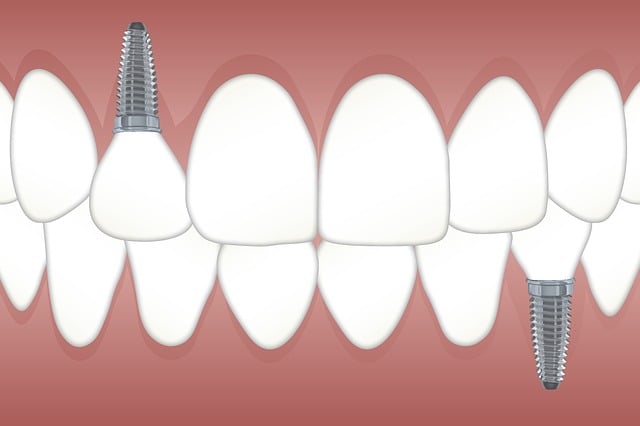Dental imaging technologies like X-rays and CT scans are essential in detecting and treating oral health issues, especially for patients undergoing Invisalign aligner treatment in Cardiff. These tools offer detailed insights into teeth, gums, and bones, enabling dentists to identify problems like decay or bone loss, even in hard-to-reach areas. CT scans provide 3D views, aiding in complex cases like tumors or fractures, and guiding precise Invisalign treatment planning for better patient outcomes and comfort.
In today’s advanced dental care landscape, understanding imaging techniques is key. X-rays and CT scans play a pivotal role in diagnosing oral health issues, from minor problems to complex conditions. This article delves into these technologies, focusing on their application in teeth straightening using Invisalign aligners in Cardiff. We explore how advanced imaging enhances treatment outcomes, ensuring patients receive the best possible care.
- Understanding Dental Imaging: X-Rays and CT Scans
- The Role of Invisalign Aligners in Teeth Straightening
- How X-Rays Help Diagnose Dental Issues
- CT Scans: Unlocking Complex Oral Problems
- Integrating Technology: Invisalign and Advanced Imaging Techniques
Understanding Dental Imaging: X-Rays and CT Scans
Dental imaging plays a crucial role in diagnosing and treating various oral health issues, including problems that may not be visible during a regular examination. X-rays and CT scans are two common diagnostic tools used by dental professionals to gain detailed insights into the structure of teeth, gums, and jawbones.
X-rays, for instance, provide high-resolution images that help detect decay, bone loss, or abnormalities in teeth and dental structures. They are particularly useful when evaluating the health of tooth roots, especially in areas difficult to access with a visual inspection. In Cardiff, where Invisalign aligners for teeth straightening are also popular, dental imaging aids orthodontists in assessing the alignment of teeth and planning treatment, ensuring precise and effective correction using advanced techniques like Invisalign. CT scans, on the other hand, offer three-dimensional views, enabling dentists to identify complex issues such as tumors, fractures, or cysts with greater accuracy, ultimately guiding appropriate treatment decisions.
The Role of Invisalign Aligners in Teeth Straightening
How X-Rays Help Diagnose Dental Issues
X-rays are an invaluable tool in diagnosing dental issues, offering a clear view of what lies beneath the surface. When it comes to teeth straightening, Invisalign aligners for teeth straightening Cardiff often begin with detailed X-ray images. These radiographs allow dentists to accurately assess the alignment and position of teeth, as well as identify any underlying problems such as impacted wisdom teeth, bone density issues, or dental decay that might not be visible during a regular examination.
By analysing these X-rays, dental professionals can make informed decisions about treatment plans. For instance, they can determine if Invisalign is the best course of action for a patient’s specific case. CT scans, while less common in initial assessments, can provide even more detailed 3D imagery, aiding in complex cases where precise measurements are crucial, such as when planning Invisalign treatments in Cardiff.
CT Scans: Unlocking Complex Oral Problems
CT scans offer a powerful tool for diagnosing complex oral problems, providing detailed 3D images that can reveal issues not visible on standard X-rays. This advanced imaging technology is especially beneficial when it comes to assessing the complexity of dental and jaw structures. For instance, Invisalign aligners for teeth straightening in Cardiff require precise planning, and CT scans play a vital role here by exposing detailed information about tooth positions, bone density, and surrounding tissues.
This level of precision allows dental professionals to create tailored treatment plans, ensuring that every aspect of the patient’s oral health is considered. With CT scans, doctors can detect subtle abnormalities, such as cysts, tumors, or bone fractures, enabling early intervention and potentially improving treatment outcomes for patients seeking teeth straightening solutions or other advanced dental procedures.
Integrating Technology: Invisalign and Advanced Imaging Techniques
In today’s digital era, advanced imaging techniques like X-rays and CT scans have become indispensable tools in diagnosing underlying dental problems. In Cardiff, for instance, these technologies are revolutionizing the way Invisalign aligners for teeth straightening are managed. By providing detailed, high-resolution images of the oral cavity, these scans enable dentists to accurately assess the current state of a patient’s teeth and gums, as well as identify potential issues that might be obscured by traditional visual examination.
This integration of technology into dental care allows for more precise treatment planning. For Invisalign, which is known for its clear and removable aligners, advanced imaging can help tailor the treatment to each patient’s unique needs. Dentists can use these scans to map out the exact movements of teeth during straightening, ensuring that the aligners are effective and efficient in achieving the desired results. This not only enhances the overall success rate but also makes the process more comfortable for the patient.
Invisalign aligners for teeth straightening in Cardiff offer a modern, efficient approach to dental care. By combining advanced imaging techniques like X-rays and CT scans, dentists can accurately diagnose and treat a range of oral issues. These non-invasive methods provide clear visual data, enabling more precise treatment planning and improved patient outcomes. Integrating technology into dental practices ensures that patients in Cardiff receive the best possible care for their smile.
